The Geoffroy’s cat is a small wild cat that inhabits South America. It is similar in size to a large domestic cat.


Scientific Name: Leopardus geoffroyi
Conservation Status: Least Concern
Lineage – The Geoffroy’s cat belongs to the Ocelot lineage, which includes the ocelot, margay, pampas cat, oncilla southern tiger, oncilla northern tiger cat, Andean mountain cat and kodkod
Meaning of name:
The cat’s name comes from a 19th-century French naturalist, Etienne Geoffroy Saint-Hilaire.
Interesting Geoffroy’s cat facts
- Strong swimmers who frequently go into the water, including large rivers.
- The Geoffroy’s cat is related to the kodkod.
- Will stands on its hind legs using its tail for support to scout the area.
- Sometimes, it gets confused with the kodkod and leopard cat.
- Southern cats are larger with lighter fur than northern cats.
- Black spots on fur in the neck area form what looks like a necklace.
More About the Geoffroy’s cat
Physical Appearance
The fur of Geoffroy’s cat ranges from deep ochre to tawny to grey with spots. It has black bands on its checks, head, neck, tail, and limbs. The back of the cat’s ears is dark with a white spot. The underbelly of Geoffroy’s cat ranges in color from white to cream.
Eye color varies from a deep golden color to grey-green.
Its tail is half the length of its body, with a black tip with several black rings.
All-black (melanistic) Geoffroy’s cats have frequently been observed.
Males are typically larger than females. Geoffory’s cats that live in the north are usually smaller than Geoffory’s cats that live in the south.
| Geoffroy’s cat | FROM | TO |
| Weight | 6 lbs. | 13 lbs. |
| Body | 24 in. | 24 in. |
| Tail | 9 in. | 12 in. |
Location
The Geoffroy’s cat can be found throughout Chile, Brazil, Bolivia, Argentina, and Paraguay. It is often seen in dry areas with dense vegetation, including forests, grasslands, savannas, woodlands, steppes, and semi-deserts. You can also find them in grasslands and marshes. They prefer areas with lots of cover.
The Geoffroy’s cat usually shares its territory with the pampas cat and puma (cougar).
These nocturnal cats are good climbers but spend most of their time on the ground. The Geoffroy’s cat is also considered an excellent swimmer. They can climb but only do it sometimes.
Hunting and prey
The range of male Geoffroy’s cats is around 4.5 sq. miles, while the female’s is less—underchest 2.5 square miles.
You will find the Geoffroy’s cat mostly hunting at night. It will stand on its legs and scan the area for threats and prey.
The diet of the Geoffroy’s cat varies depending on where it lives. It feeds on small rodents, birds, hares, frogs, fish remains, and reptiles.
Reproduction
The Geoffroy’s cat breeding season is six months, from October to March.
Kittens are born from December to May. Gestation is 72 to 78 days. They are born blind and weigh between 2 and 4 ounces. They become independent after eight months and sexually mature between 18 and 24 months.
Geoffroy’s Cat Conservation
The Geoffroy’s cat faces several conservation issues that threaten its populations. Below is a summary of the cat’s survival challenges.
- Habitat Loss and Fragmentation: Deforestation and conversion of natural habitats for agriculture, particularly soybean farming and cattle ranching, are major issues in regions like Argentina, Bolivia, Brazil, Chile, Paraguay, and Uruguay. These activities reduce the cat’s habitat, fragment populations, and limit access to prey and breeding grounds. Urbanization and infrastructure development cause even more habitat loss issues.
- Illegal Hunting and Poaching: Historically, Geoffroy’s cats were heavily hunted for their pelts, which were exported in large numbers (e.g., hundreds of thousands in the 1970s and 1980s). Although international trade has declined due to regulations such as CITES (Appendix I listing), illegal hunting persists in certain areas.
- Human-Wildlife Conflict: Geoffroy’s cats are sometimes blamed for preying on small livestock or poultry, leading to persecution by farmers and ranchers. Expanding road networks increase the risk of vehicle collisions, particularly in fragmented habitats where cats must crossroads to access resources.
- Mating with Domestic Cats: Interbreeding with feral or domestic cats, especially in areas near human settlements, poses a risk to the genetic integrity of Geoffroy’s cat populations. It can lead to reduced fitness and loss of unique genetic traits, complicating conservation efforts.
- Climate Change: Changing precipitation patterns and temperatures in South America affect prey availability and habitat suitability. For example, droughts in the Gran Chaco region or floods in wetland areas disrupt ecosystems that Geoffroy’s cats rely on.
- Lack of Data: Despite being listed as Least Concern by the IUCN (2016 assessment), there is not much known about population trends in many regions. Insufficient data makes effective management difficult, particularly in remote or understudied areas like the Andean highlands or Patagonia.
- Prey Base Decline: Overhunting of prey species (e.g., small rodents, birds, and lagomorphs) and habitat degradation reduce food availability, impacting Geoffroy’s cat survival and reproduction. In some areas, competition with other predators, including invasive species like feral cats, may further strain resources.

Geoffroy’s Cat Research Quotes
“Geoffroy’s cats most frequently used Exotic Woodland areas followed by Rocky and Agricultural areas.” –
“2012 Home range size and habitat selection of Geoffroy’s cat (Leopardus geoffroyi, Felidae, Carnivora) in the Pampas grassland


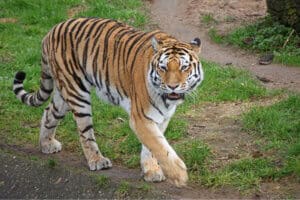
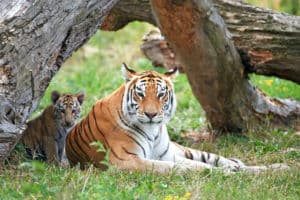
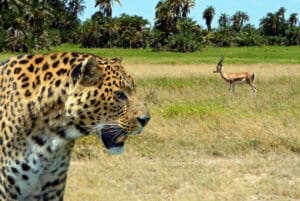

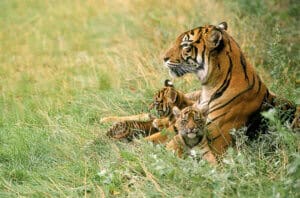


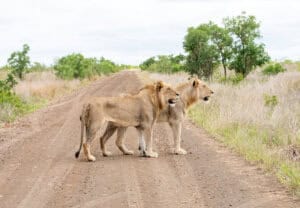
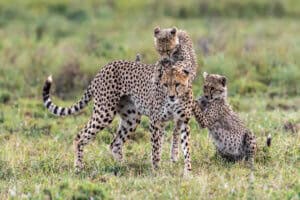


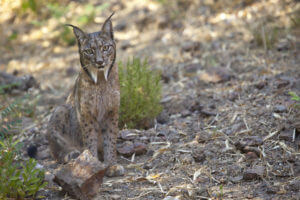

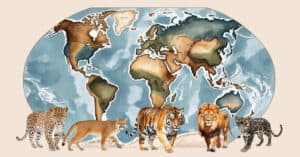


0 Comments